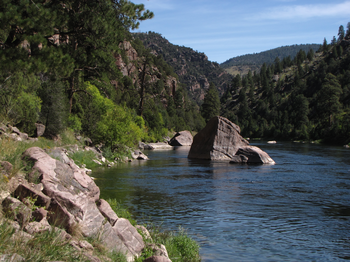Visit Dinosaurland and Vernal, Utah
Vernal, Utah, is a gateway to some of the most spectacular scenery in the American West. The town is located in northeastern Utah, and it is surrounded by towering mountains, deep canyons, and ancient dinosaur fossils.
If you’re looking for an adventure-filled summer vacation, Vernal is the perfect place for you. There are endless opportunities for hiking, camping, fishing, rafting, and learning dinosaurs.
In this blog post, I’ll outline a 3-day itinerary for visiting Vernal that will take you to some of the best spots in the area.
Day 1: Dinosaur River Expeditions
Start your day with a Utah one day river rafting trip on the Green River with Dinosaur River Expeditions. This is a great way to experience the beauty of the canyons and get cooled off on a hot summer day.
Dinosaur River Expeditions single day river rafting trip takes you along the Green River from Flaming Gorge Dam to Little Hole. This scenic 7 mile section of the river takes you through some of the most breathtaking scenery around, not to mention some fun class 2 white water action along the way.
After your rafting trip, enjoy a delicious Dinner at the Vernal Brewing Company. This brewery is located in the heart of downtown Vernal, and it has a great selection of craft beers on tap. Vernal Brewing Company is locally owned and operated, brewing all of their beers in house. Their menu is top notch with a great selection of options for all visitors.
Day 2: Vernal Rodeo
If you visit Vernal, Utah during the first part of July a must do is the Vernal Dinosaur Roundup Rodeo. This rodeo is a great way to experience the cowboy culture of the Uintah Basin. You’ll see some of the top cowboys and cowgirls competing in events like bull riding, bronc riding, and barrel racing.
Tickets are affordable, so this is a great way to see some live entertainment in Vernal and experience rodeo action like nowhere else as the top cowboys and cowgirls compete for their chance at the National Finals Rodeo.
Day 3: Flaming Gorge National Recreation Area
On your last day in Vernal, visit the Flaming Gorge National Recreation Area. Not only a great place for single day river rafting trips,this recreation area is home to stunning scenery, including towering cliffs, deep canyons, and the Flaming Gorge Reservoir.
There are endless opportunities for outdoor recreation in the Flaming Gorge National Recreation Area. You can go hiking, camping, fishing and boating.
If you’re looking for a truly unique experience, take a scenic drive on the Flaming Gorge National Scenic Byway. This byway winds its way through the Uinta Mountains and incredible canyons offering some incredible views of the reservoir.
Accommodations
There is a variety of accommodations to choose from in Vernal. If you’re looking for a budget-friendly option, consider staying at the Vernal KOA campground. This campground has RV sites, tent sites, and cabins.
If you’re looking for a hotel stay, consider booking a room at the Dinosaur Inn. This motel is in the heart of downtown Vernal, and it has a swimming pool, hot tub, great breakfast menu and is within walking distance of restaurants and several museums.
Logistics
The best time to visit Vernal is during the summer months, when the weather is warm and sunny. The nearest major airport is Salt Lake City International Airport, which is about a 3-hour drive from Vernal.
Budget
The cost of a trip to Vernal will vary depending on the length of your stay, your activities, and your accommodation. However, you can expect to spend around $1,000 for a 3-day trip.
Tips
- Be sure to pack sunscreen, sunglasses, and a hat for your time in Vernal.
- If you’re planning on doing any hiking or rafting, be sure to wear comfortable shoes and clothing.
- Bring a camera to capture all of your memories.
- Be sure to book your accommodations and activities in advance, especially during the summer months.
Vernal, Utah is a great place to visit if you’re interested in dinosaurs, outdoor recreation, and a quiet small town with lots to offer.




